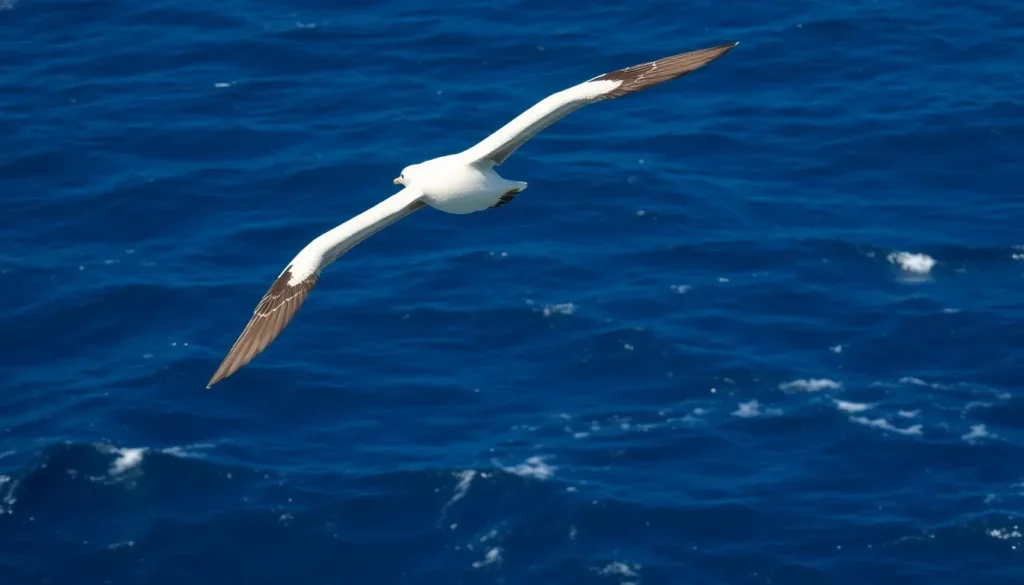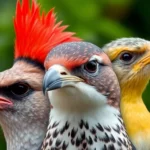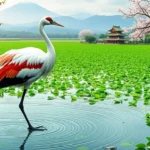We’ve all heard the term “albatross around one’s neck” but most of us rarely consider the magnificent bird behind this famous expression. These oceanic wanderers represent some of nature’s most impressive aviators with wingspans that can stretch over 11 feet and flight capabilities that put modern aircraft to shame.
Albatrosses aren’t just large seabirds – they’re evolutionary masterpieces that spend years gliding across ocean surfaces without touching land. From their unique courtship dances to their incredible ability to sleep while flying we’re about to explore why these birds have captured human imagination for centuries.
Whether you’re a birdwatching enthusiast or simply curious about one of Earth’s most fascinating creatures we’ll take you on a journey through the albatross’s remarkable industry. You’ll discover how these birds navigate thousands of miles using internal compasses and why they’re considered both symbols of good luck and harbingers of doom in maritime folklore.
What Is an Albatross Bird
Albatross birds represent some of the most magnificent seabirds inhabiting our planet’s oceans. These extraordinary creatures belong to the family Diomedeidae and cover 22 distinct species across 4 genera. Large wingspans distinguish albatrosses from other seabirds, with the wandering albatross holding the record at 11.5 feet from tip to tip.
Ocean environments serve as the primary habitat for these remarkable birds. Albatrosses spend approximately 85% of their lives soaring above open waters, rarely touching land except during breeding seasons. Southern Ocean regions house the majority of species, though several inhabit North Pacific waters and tropical zones.
Physical characteristics make albatrosses instantly recognizable among seabirds. Bodies measure between 28 to 50 inches in length depending on the species. Weights range from 17 pounds for smaller species like the light-mantled albatross to 25 pounds for larger varieties such as the royal albatross. Tube-shaped nostrils positioned on either side of their hooked bills help these birds process salt from seawater.
Flight capabilities set albatrosses apart from virtually all other bird species. Ever-changing soaring techniques allow them to harness wind energy and glide for hours without flapping their wings. Scientists have recorded individual albatrosses covering over 500 miles in a single day using these energy-efficient flight patterns.
Longevity marks another distinctive feature of albatross species. These seabirds commonly live 50 to 60 years in the wild, with some documented individuals reaching ages exceeding 70 years. Extended lifespans contribute to their complex social structures and elaborate courtship behaviors that can span multiple years before successful breeding occurs.
Physical Characteristics of the Albatross
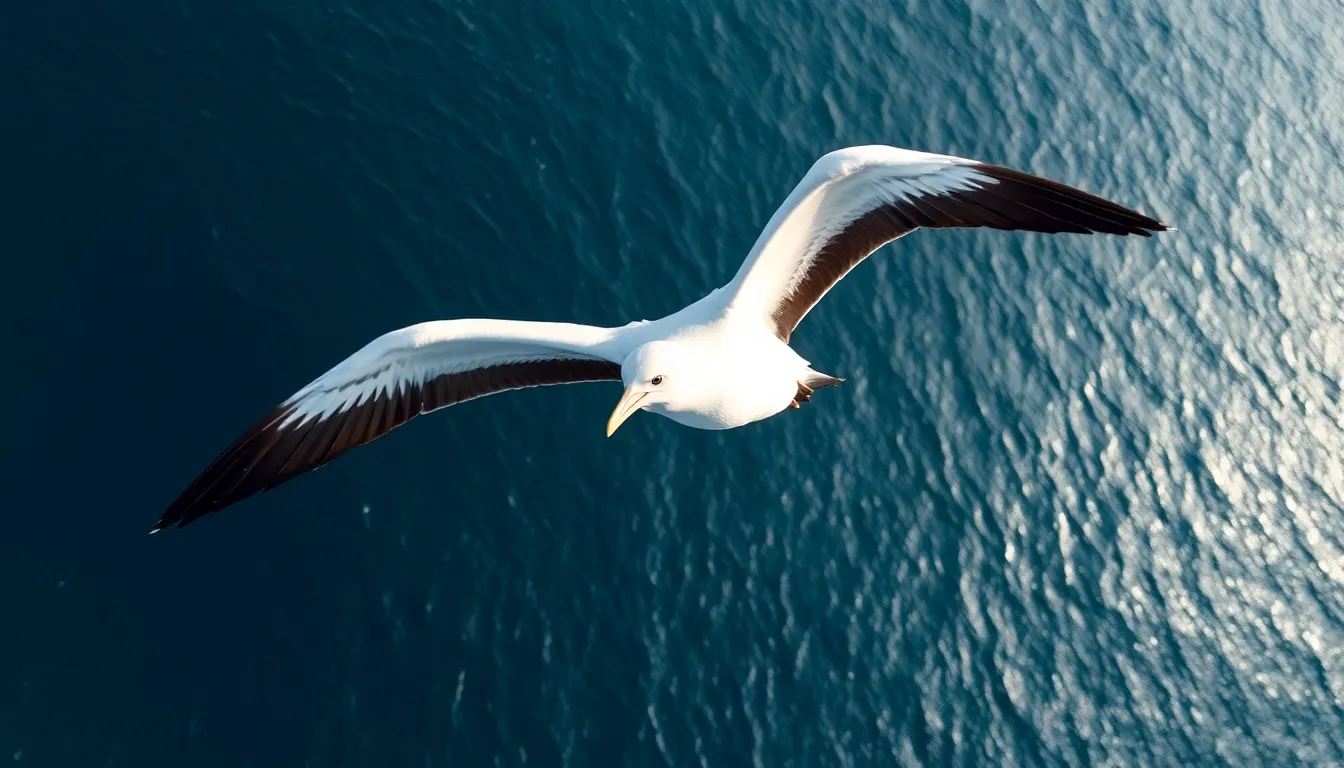
Albatross birds display remarkable physical adaptations that make them among the most distinctive seabirds on Earth. These magnificent creatures possess features specifically evolved for life spent soaring over vast ocean expanses.
Wingspan and Size
Wingspan measurements vary dramatically across albatross species, creating one of nature’s most impressive size ranges. The wandering albatross holds the record with wingspans reaching 11.5 feet from tip to tip, while smaller species like the light-mantled albatross measure approximately 6.5 feet across.
Body length dimensions range from 28 to 50 inches depending on the species. Great albatrosses including the wandering and royal albatross reach the maximum lengths, whereas mollymawks and sooty albatrosses fall into the smaller categories. Weight distributions span from 17 to 25 pounds, with females typically weighing less than males in most species.
| Albatross Type | Wingspan Range | Body Length | Weight Range |
|---|---|---|---|
| Wandering Albatross | 9.5-11.5 feet | 42-53 inches | 13-25 pounds |
| Royal Albatross | 9.5-11 feet | 42-48 inches | 14-18 pounds |
| Light-mantled Albatross | 6-7 feet | 31-35 inches | 5.5-8 pounds |
| Black-browed Albatross | 7-8 feet | 32-37 inches | 7-10 pounds |
Distinctive Features
Tube-shaped nostrils represent the most unique anatomical feature of albatross birds, extending from the top of their bills in distinctive formations. These specialized structures filter salt from seawater and enhance their extraordinary sense of smell for locating food sources across vast ocean distances.
Bill characteristics include powerful hooked tips designed for grasping slippery prey like squid and fish. The bills range in color from pale yellow to bright orange depending on species and breeding status. Black-browed albatross bills display vibrant yellow-orange coloration, while sooty albatross bills appear darker with subtle color variations.
Wing structure features extremely long and narrow proportions optimized for ever-changing soaring flight patterns. The wings contain specialized tendons that lock into position, allowing albatross birds to glide for hours without active flapping. Primary feathers extend well beyond the tail, creating the characteristic silhouette recognizable from great distances.
Plumage patterns differ significantly between species, ranging from pure white bodies with dark wing markings to entirely dark brown coloration. Wandering albatross adults develop predominantly white plumage with black wingtips, while light-mantled albatross maintain uniform gray-brown coloring throughout their lives.
Albatross Species Around the World
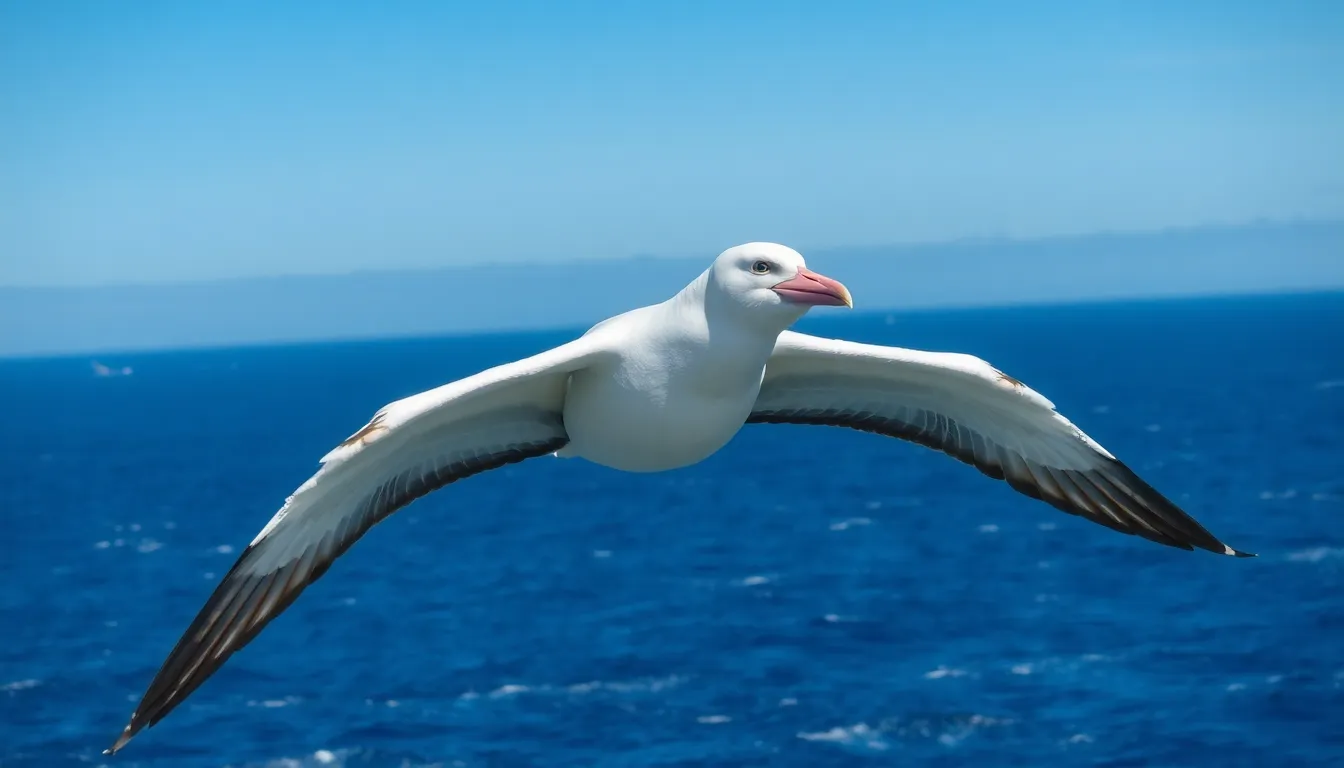
Twenty-two distinct albatross species inhabit oceans across the globe, each adapted to exact marine environments and geographic regions. These remarkable seabirds showcase incredible diversity in size, plumage patterns, and behavioral characteristics while maintaining their signature soaring abilities.
Wandering Albatross
Wandering albatrosses (Diomedea exulans) represent the largest albatross species, with wingspans reaching 11.5 feet and body lengths extending up to 53 inches. Males typically weigh between 13 to 28 pounds, while females range from 11 to 20 pounds, making them the heaviest flying birds on Earth.
Southern Ocean waters surrounding Antarctica provide the primary habitat for wandering albatrosses, where they spend months gliding across vast oceanic expanses. Their distinctive white bodies feature dark wing markings that become more pronounced with age, and their massive pink bills can measure up to 7 inches in length.
Breeding occurs every two years on subantarctic islands including South Georgia, Prince Edward Islands, and Macquarie Island. These albatrosses demonstrate extraordinary longevity, with documented lifespans exceeding 80 years, and some individuals tracked for over 60 years of continuous monitoring.
Black-Browed Albatross
Black-browed albatrosses (Thalassarche melanophris) comprise one of the most abundant albatross species, with populations exceeding 1.2 million breeding pairs worldwide. Their wingspans measure between 7.5 to 8.5 feet, and adults weigh approximately 6 to 10 pounds with body lengths reaching 35 inches.
Southern Ocean colonies concentrate on Falkland Islands, South Georgia, and various subantarctic islands where over 70% of the global population breeds. Dark eyebrow markings above their eyes create the distinctive facial features that give these birds their common name, while their bright yellow-orange bills contrast sharply with white heads and gray backs.
Foraging behavior includes following fishing vessels and feeding on krill, squid, and small fish within 600 miles of their breeding colonies. Black-browed albatrosses typically live 40 to 50 years and demonstrate remarkable site fidelity, returning to the same nesting locations throughout their lifespans.
Laysan Albatross
Laysan albatrosses (Phoebastria immutabilis) inhabit North Pacific waters and represent the most many albatross species in Hawaiian waters, with over 1.6 million individuals. Their wingspans range from 6.4 to 6.7 feet, body lengths measure 32 inches, and adults weigh between 5.9 to 10.8 pounds.
Hawaiian islands host approximately 99% of Laysan albatross breeding populations, with Midway Atoll supporting over 475,000 breeding pairs annually. These birds display predominantly white plumage with dark upper wing surfaces and distinctive dark patches around their eyes, complemented by pink bills with dark tips.
Remarkable navigation abilities allow Laysan albatrosses to travel thousands of miles across Pacific waters during foraging trips that can last several weeks. Their diet consists primarily of squid, fish, and crustaceans captured through surface seizing and shallow diving techniques, and documented lifespans reach up to 68 years in wild populations.
Habitat and Distribution
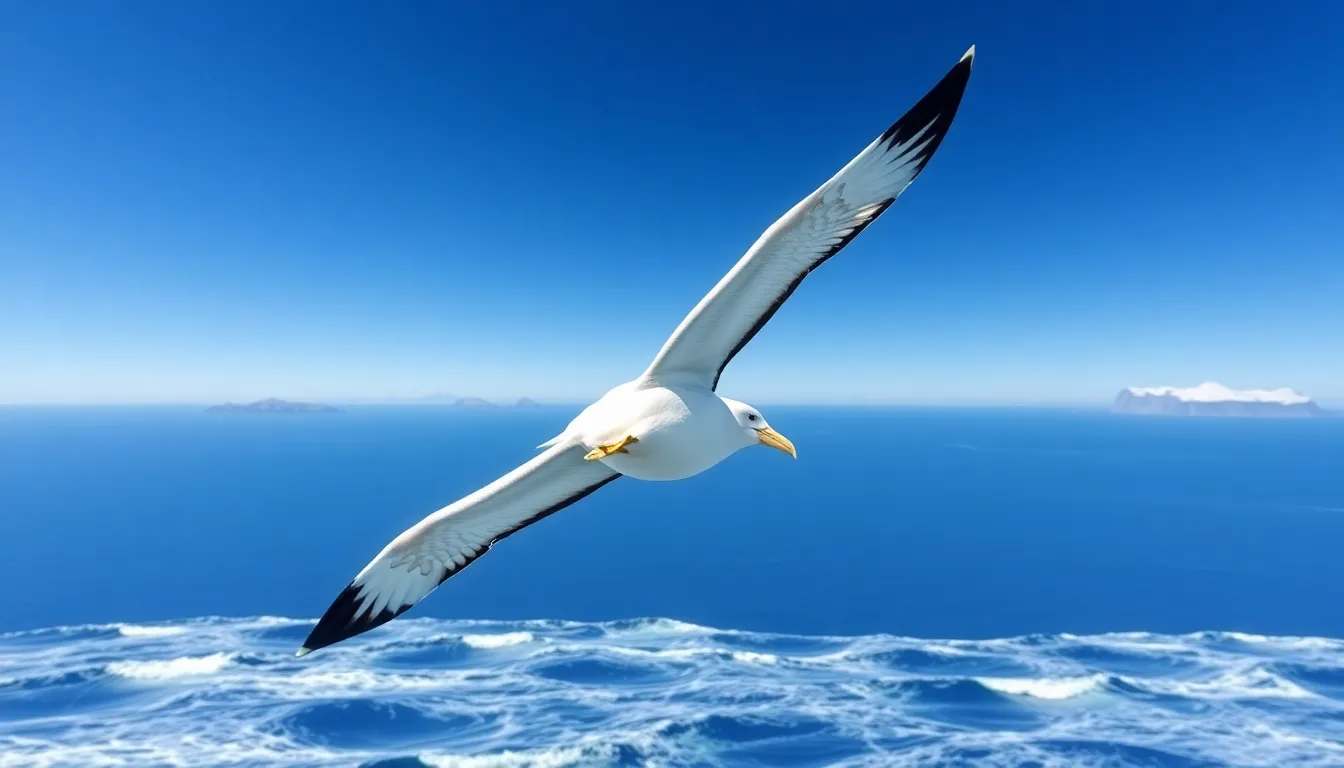
Albatrosses inhabit the vast expanses of the Southern Ocean and northern Pacific waters, where they’ve adapted to life in some of Earth’s most challenging marine environments. These magnificent seabirds occupy territories across multiple oceanic regions, from the frigid Antarctic waters to the tropical Pacific islands.
The Southern Hemisphere hosts the majority of albatross species, with 15 of the 22 species breeding exclusively below the equator. Subantarctic islands serve as primary breeding grounds, including South Georgia, Crozet Islands, Kerguelen Islands, and Macquarie Island. Remote locations like these provide the isolation these birds require for successful reproduction cycles.
| Region | Primary Species | Breeding Islands | Ocean Range |
|---|---|---|---|
| Southern Ocean | Wandering, Royal, Light-mantled | South Georgia, Crozet, Kerguelen | Antarctic to subtropical waters |
| North Pacific | Laysan, Black-footed, Short-tailed | Hawaiian chain, Japan, Alaska | Bering Sea to equatorial Pacific |
| South Atlantic | Black-browed, Grey-headed | Falklands, South Georgia | Cape Horn to South Africa |
| Indian Ocean | Amsterdam, Sooty | Amsterdam Island, Marion Island | Southern Indian Ocean basin |
Pacific albatross populations concentrate around exact island chains that offer suitable nesting conditions. Hawaiian Islands support large colonies of Laysan and black-footed albatrosses, particularly on Midway Atoll and Laysan Island. Japanese breeding sites include Torishima and the Senkaku Islands, though these populations face important conservation challenges.
Geographic distribution patterns reflect millions of years of evolutionary adaptation to oceanic conditions. Northern species like the Laysan albatross rarely cross the equator, maintaining distinct populations that exploit different marine food webs. Southern species demonstrate similar geographic fidelity, with some populations showing remarkable site loyalty across multiple breeding seasons.
Foraging ranges extend thousands of miles from breeding colonies, with individual birds tracking ocean currents and weather patterns to locate productive feeding areas. Wandering albatrosses cover territories spanning entire ocean basins, while smaller species like the black-browed albatross maintain more localized foraging patterns around continental shelves.
Climate change increasingly affects traditional albatross habitats, forcing some populations to adapt their distribution patterns. Rising sea levels threaten low-lying breeding islands, while shifting ocean temperatures alter prey distribution across historic foraging grounds.
Feeding Behavior and Diet
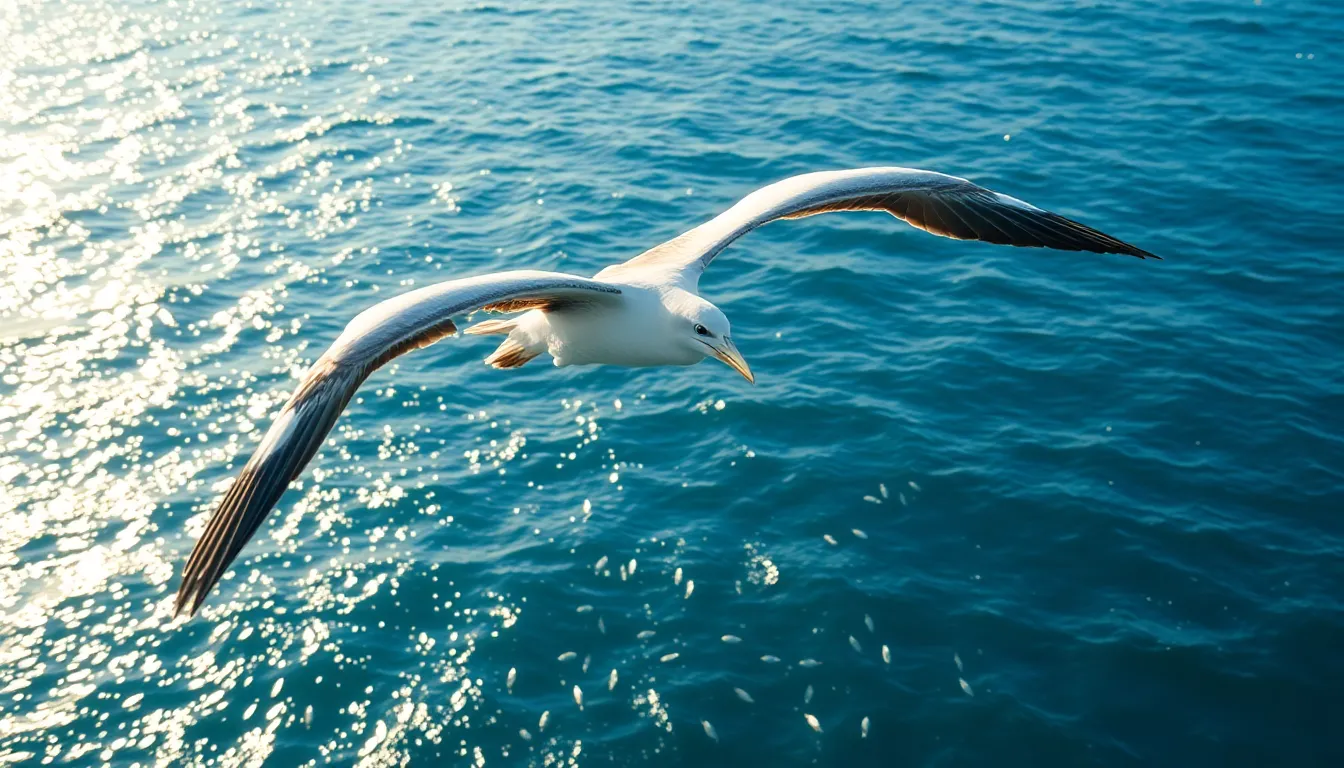
Feeding behavior of albatross birds centers around their exceptional ability to locate prey across vast ocean expanses. These seabirds primarily consume fish, squid, krill, and crustaceans through surface feeding techniques that minimize energy expenditure. Albatross species demonstrate remarkable foraging strategies, traveling hundreds of miles from breeding colonies to access rich feeding grounds.
Ever-changing soaring enables albatrosses to cover extensive distances while searching for food patches in the open ocean. We observe these birds using their acute sense of smell to detect dimethyl sulfide, a compound released by marine organisms that indicates feeding opportunities. Their tube-shaped nostrils contain specialized salt glands that process excess salt from their marine diet.
Surface feeding represents the primary hunting method for most albatross species, where birds snatch prey from the water surface without fully submerging. Pursuit diving occurs less frequently, with some species capable of diving depths up to 15 feet to capture deeper swimming prey. Scavenging behavior includes following fishing vessels to feed on discarded bycatch and offal, which unfortunately exposes them to fishing line hazards.
| Diet Component | Percentage | Primary Species |
|---|---|---|
| Fish | 45-60% | Sardines, anchovies, mackerel |
| Squid | 25-35% | Various cephalopod species |
| Krill | 10-20% | Antarctic krill, copepods |
| Crustaceans | 5-10% | Small crabs, shrimp |
Foraging patterns vary significantly between breeding and non-breeding seasons, with adults traveling farther during chick-rearing periods. Breeding pairs alternate foraging trips, with one parent remaining at the nest while the other searches for food across distances exceeding 1,000 miles. Non-breeding albatrosses demonstrate more flexible feeding schedules, following seasonal prey migrations across ocean basins.
Seasonal dietary shifts reflect changing prey availability in different ocean regions throughout the year. During summer months, albatrosses concentrate on krill swarms in polar waters, while winter feeding focuses on fish and squid in temperate zones. These birds store partially digested food in their stomachs, allowing them to transport nutrients back to their chicks over extended flights.
Human activities significantly impact albatross feeding patterns through commercial fishing operations and marine pollution. Longline fishing vessels attract these birds with bait, leading to accidental deaths when albatrosses become hooked on fishing lines. Plastic debris consumption poses another threat, as these birds mistake floating plastic for natural prey items.
Breeding and Life Cycle
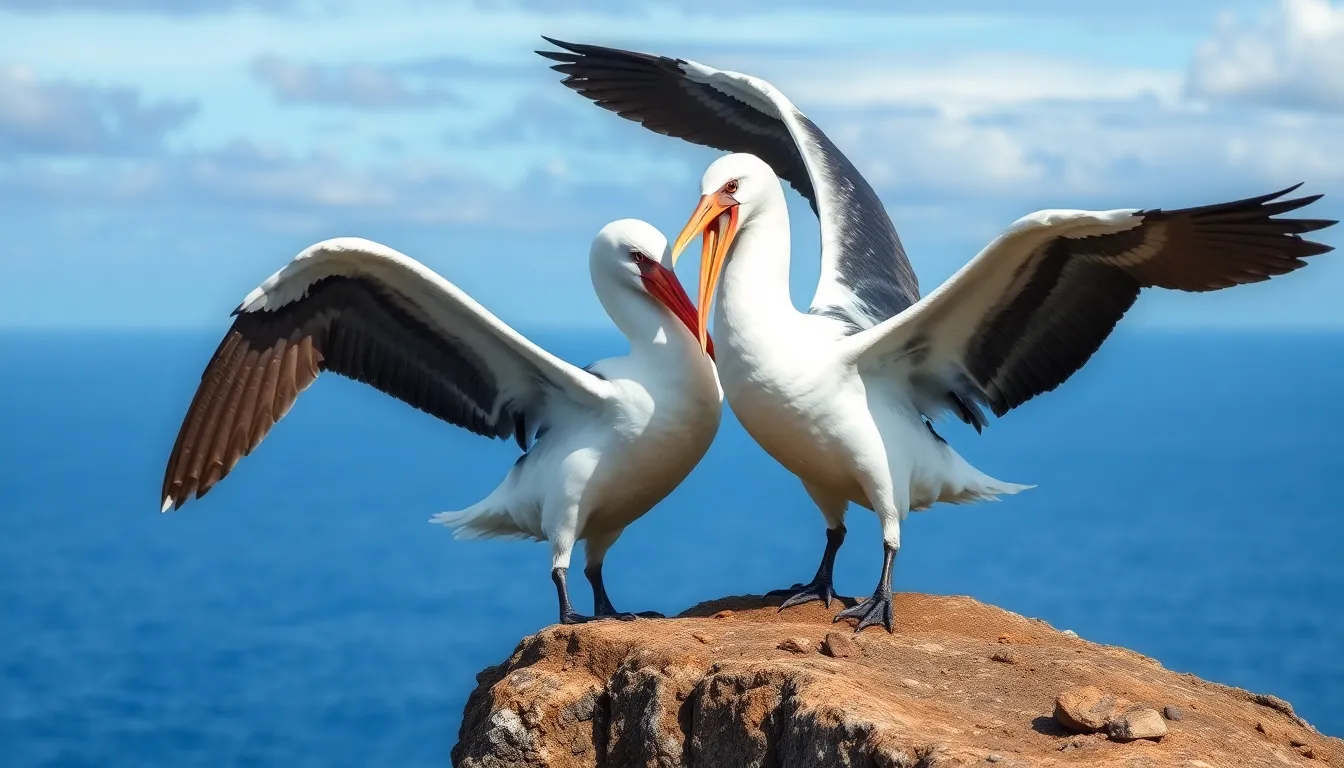
Albatross breeding cycles represent one of nature’s most extended and complex reproductive processes. These magnificent seabirds demonstrate remarkable commitment to their mates and offspring through elaborate courtship displays and dedicated parental care.
Mating Rituals
Albatross courtship displays rank among the most sophisticated in the avian industry. Synchronized dancing forms the foundation of pair bonding, with partners performing intricate sequences of head movements, bill touching, and wing spreading. Dancing sessions can last several hours and occur repeatedly over multiple breeding seasons.
Bill fencing demonstrates the precision of albatross communication, as pairs tap their beaks together in rhythmic patterns unique to each species. Wandering albatrosses engage in this behavior for up to 45 minutes during peak courtship periods. Preening rituals strengthen pair bonds, with mates carefully grooming each other’s neck and head feathers.
Sky pointing displays involve both partners extending their necks skyward while calling in unison. Black-browed albatrosses perform this behavior most frequently during dawn and dusk hours. Mutual calling creates distinctive duets that help pairs recognize each other across crowded breeding colonies containing thousands of birds.
Wing stretching ceremonies showcase the impressive wingspan of potential mates. Laysan albatrosses incorporate wing movements into complex sequences that can include up to 25 different postures. These displays serve dual purposes of attracting mates and establishing territorial boundaries within breeding areas.
Nesting Habits
Albatross nesting sites concentrate on remote islands with minimal human disturbance. Colony formation occurs on exposed clifftops, grasslands, and volcanic slopes that provide optimal wind conditions for takeoff and landing. Wandering albatrosses select sites with elevations between 300 and 2,000 feet above sea level.
Nest construction varies significantly between species, with some building elaborate mud and vegetation structures while others create simple scrapes in the ground. Royal albatrosses construct cone-shaped nests reaching 18 inches in height using grass, soil, and feathers. Light-mantled albatrosses prefer cliff ledges where they build minimal nests from available vegetation.
Site fidelity remains exceptionally strong among albatross pairs, with 85% returning to the same nesting location annually. Breeding pairs often use identical nest sites for 15 to 20 consecutive years. Territory defense involves aggressive posturing and bill clashing when neighboring pairs encroach on established boundaries.
Egg laying occurs once every two years for most species, with females producing a single white egg weighing 7 to 18 ounces depending on species size. Incubation periods extend from 65 to 85 days, with both parents sharing responsibility in alternating shifts lasting 2 to 6 weeks.
Chick development progresses slowly, with fledgling periods ranging from 140 to 303 days. Wandering albatross chicks remain in nests for nearly 11 months before achieving flight capability. Parental feeding involves adults traveling hundreds of miles to gather nutrient-rich regurgitated food for their offspring.
Flight Capabilities and Navigation
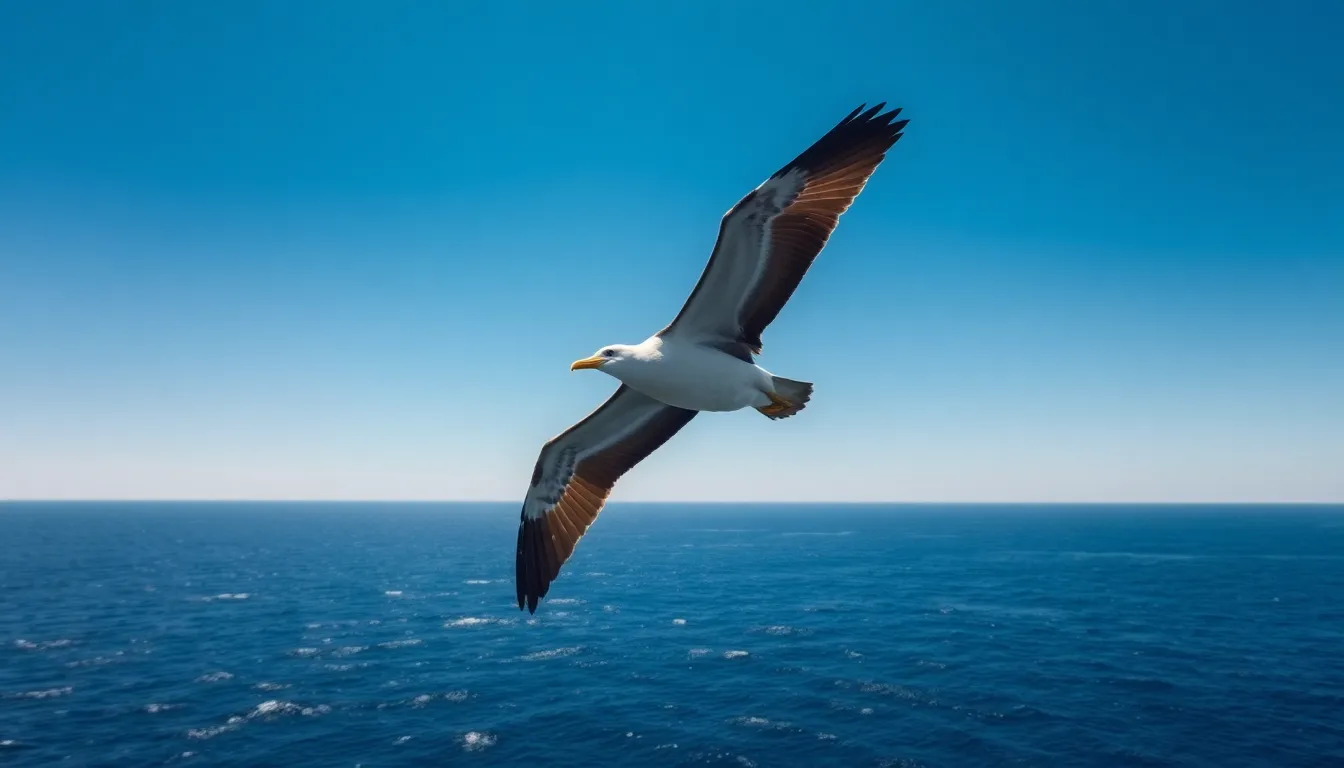
Albatross flight capabilities represent one of nature’s most efficient aerial systems, utilizing ever-changing soaring techniques that allow these seabirds to travel thousands of miles with minimal energy expenditure. Their wings function as natural gliders, exploiting wind gradients and air currents to maintain altitude for hours without a single wingbeat.
Ever-changing soaring enables albatrosses to harness the energy differential between wind speeds at various altitudes above the ocean surface. These birds climb into faster-moving air masses at higher elevations, then descend toward the water where wind speeds decrease, converting this speed differential into forward momentum. The process repeats continuously, creating an efficient flight pattern that conserves energy over vast distances.
Key Flight Performance Metrics:
| Flight Characteristic | Measurement | Species Variation |
|---|---|---|
| Maximum daily distance | 500+ miles | All species |
| Continuous flight duration | 10+ hours | Without landing |
| Gliding speed | 35-50 mph | Depending on conditions |
| Wing loading efficiency | 0.5-0.8 kg/m² | Varies by species size |
Navigation abilities in albatrosses combine multiple sensory systems to achieve remarkable precision across open ocean environments. Magnetic field detection serves as their primary compass system, with specialized cells in their beaks sensing Earth’s magnetic variations. Olfactory navigation plays a crucial role, as these birds detect chemical gradients in ocean water and air masses to identify exact geographic regions.
Visual landmarks become important during the final approach to breeding islands, though albatrosses rely less on sight for long-distance navigation compared to other seabird species. Sun compass orientation provides additional directional reference, particularly during clear weather conditions when other navigation cues might be less reliable.
Foraging flight patterns demonstrate the sophisticated nature of albatross navigation systems. Breeding adults execute precise return journeys to exact feeding areas located hundreds of miles from their nesting sites. These birds maintain mental maps of productive ocean zones, remembering the locations of upwelling areas and convergence zones where prey concentrations are highest.
Wind pattern recognition allows albatrosses to predict weather systems and adjust their flight paths accordingly. They avoid storm centers while utilizing the peripheral winds of weather systems to increase their travel efficiency. This meteorological awareness enables them to time their departures from breeding colonies to coincide with favorable wind conditions.
Individual navigation accuracy varies between species, with wandering albatrosses demonstrating the most sophisticated long-distance navigation abilities among all albatross species. These birds can return to their exact nesting territory after foraging trips covering over 3,000 miles across the Southern Ocean. Black-browed albatrosses show similar precision over shorter distances, while Laysan albatrosses excel at handling the complex wind patterns of the North Pacific.
Conservation Status and Threats
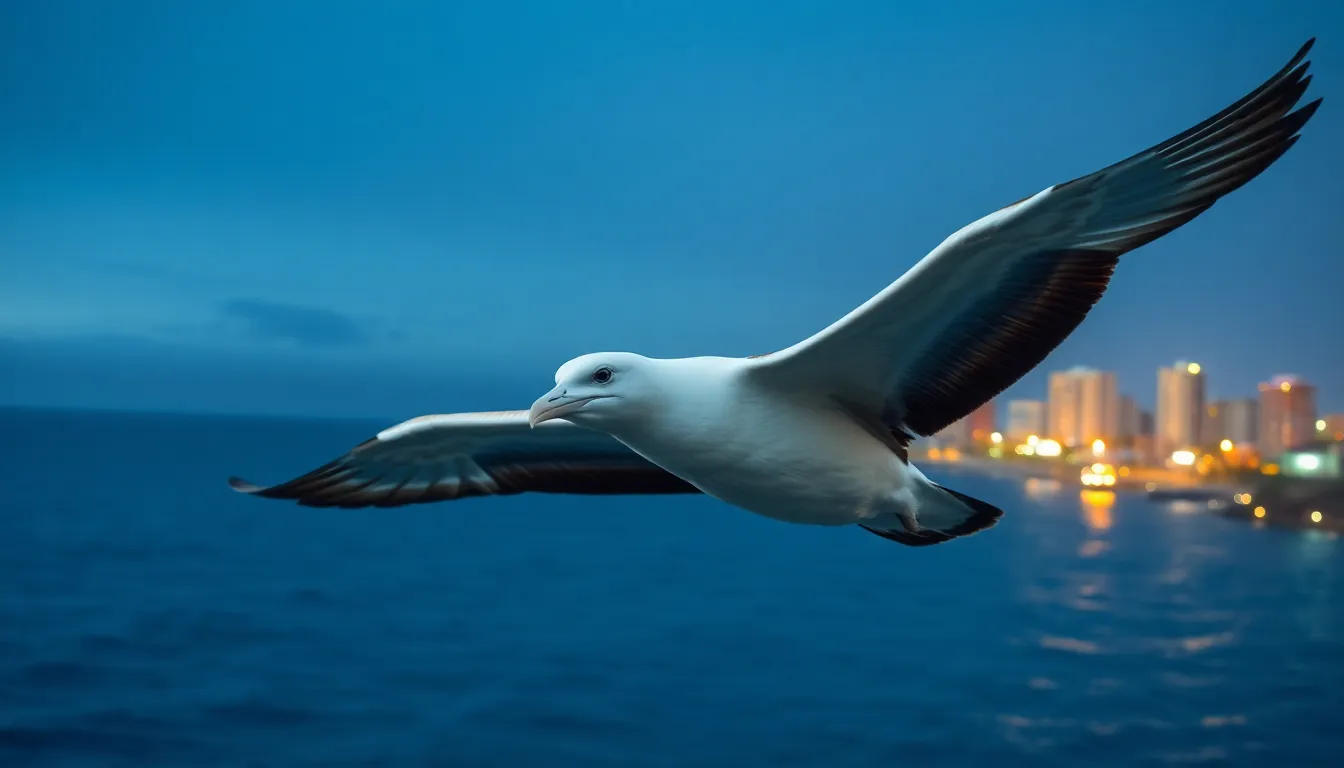
Albatross populations face unprecedented challenges across their oceanic ranges. Three-quarters of albatross species currently experience declining populations, with conservation organizations listing 15 of the 22 species as threatened or near-threatened.
Human Impact
Commercial fishing operations pose the greatest direct threat to albatross survival. Longline fishing vessels deploy hooks baited with squid and fish across thousands of miles of ocean, inadvertently catching albatrosses that dive for the bait and become hooked underwater.
| Threat Type | Annual Impact | Species Most Affected |
|---|---|---|
| Longline fishing | 100,000+ birds killed | Wandering, black-browed |
| Plastic ingestion | 90% of chicks affected | Laysan, black-footed |
| Light pollution | 40% breeding disruption | Newell’s, Hawaiian |
| Invasive species | 60% nest failure | Amsterdam, Tristan |
Plastic debris consumption has reached alarming levels in albatross populations. Parents unknowingly feed plastic fragments to their chicks, mistaking colorful debris for natural prey like squid and fish. Laysan albatross chicks on Midway Atoll contain an average of 45 pieces of plastic in their stomachs.
Introduced predators devastate ground-nesting albatross colonies on breeding islands. Cats kill adult birds and destroy eggs, while rats consume chicks and eggs during vulnerable nighttime hours. Mice populations on Gough Island attack albatross chicks that can weigh up to 20 times more than the rodents themselves.
Light pollution from coastal developments disrupts albatross navigation systems. Newly fledged birds become disoriented by artificial lights and crash into buildings, power lines, and vehicles. Hawaiian communities record over 1,000 grounded Newell’s albatross annually due to light attraction.
Climate Change Effects
Rising ocean temperatures alter the distribution of prey species that albatrosses depend upon for survival. Warmer waters push fish and squid populations deeper or farther from traditional foraging areas, forcing adult birds to travel greater distances to find adequate food for their chicks.
Sea level rise threatens low-lying breeding islands across the Pacific and Southern Oceans. Tuvalu and other coral atolls that host important albatross colonies experience regular flooding during high tides, destroying nests and reducing available nesting habitat by 30% over the past two decades.
Changing wind patterns disrupt the air currents that albatrosses rely on for efficient flight. Weakening trade winds in the Pacific reduce the birds’ ability to soar long distances without expending energy, affecting their capacity to reach productive feeding grounds during critical breeding periods.
Storm intensity increases create more frequent extreme weather events that destroy nesting colonies. Category 4 and 5 hurricanes now occur twice as frequently in albatross breeding ranges compared to historical averages, wiping out entire breeding seasons for affected populations.
Ocean acidification reduces the abundance of calcium carbonate organisms like pteropods and small crustaceans that form essential components of albatross diets. Pacific albatross species show decreased reproductive success in areas where ocean pH has dropped below 7.8 units.
Cultural Significance of the Albatross Bird
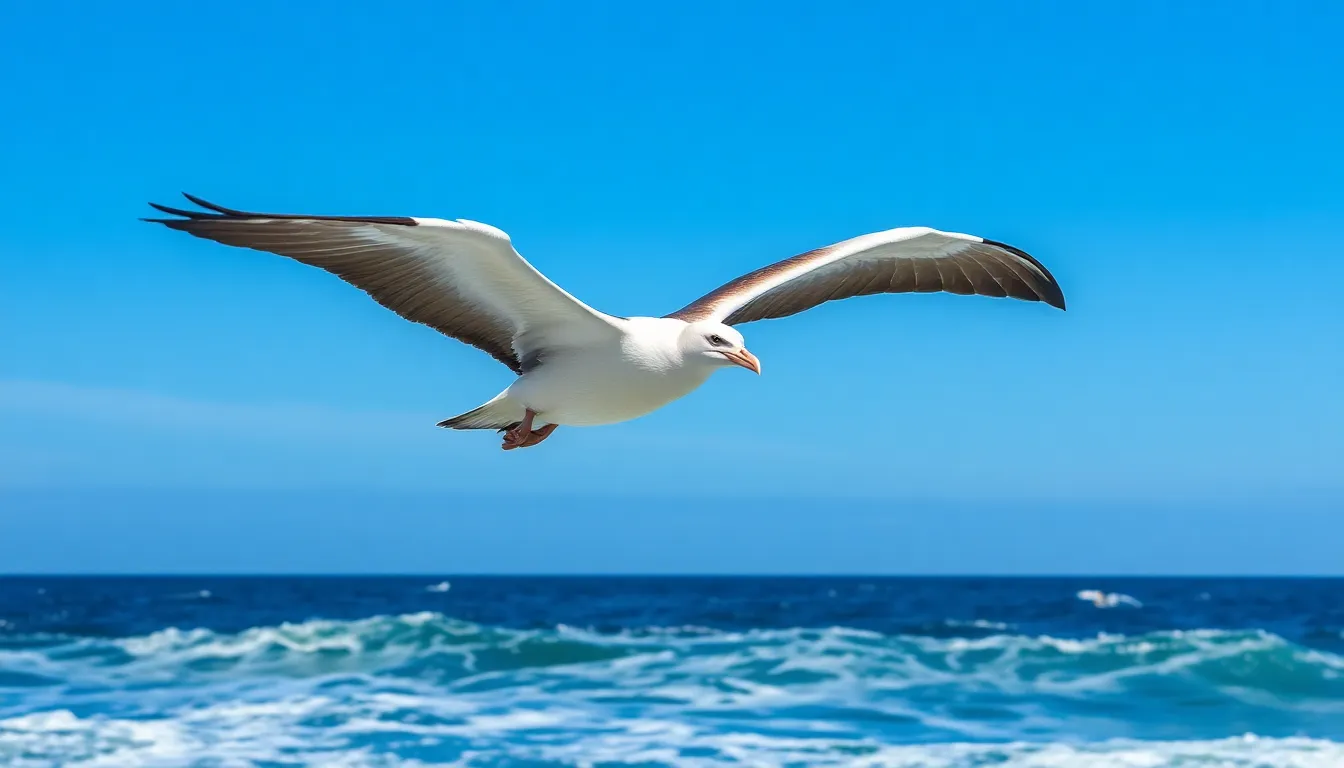
Maritime cultures across the globe have woven albatross symbolism into their folklore for centuries. Sailors traditionally viewed these magnificent seabirds as harbingers of good fortune, believing their presence signaled favorable winds and safe passage through treacherous waters. Ancient Polynesian navigators considered albatrosses sacred messengers connecting the physical and spiritual realms.
Samuel Taylor Coleridge’s 1798 poem “The Rime of the Ancient Mariner” transformed albatross cultural perception in Western literature. The narrative depicts a sailor who kills an albatross and later faces supernatural punishment, establishing the phrase “albatross around one’s neck” to describe persistent burdens or curses. This literary work shifted the bird’s symbolism from purely positive to encompassing themes of guilt, redemption, and environmental consequence.
Modern environmental movements have adopted the albatross as a powerful symbol of ocean conservation. These birds represent the interconnectedness of marine ecosystems and the far-reaching impacts of human activities on wildlife. Conservation organizations frequently use albatross imagery to highlight plastic pollution, climate change effects, and commercial fishing threats facing seabird populations.
| Cultural Context | Symbolic Meaning | Geographic Region |
|---|---|---|
| Maritime folklore | Good fortune and safe passage | Global coastal cultures |
| Polynesian tradition | Sacred messengers | Pacific Islands |
| Western literature | Burden or curse | Europe and Americas |
| Environmental advocacy | Ocean conservation | Worldwide |
Indigenous communities in the Southern Ocean regions have maintained albatross spiritual connections for generations. Maori traditions in New Zealand regard the royal albatross as a taonga (treasure), representing wisdom, endurance, and the ability to navigate life’s challenges. Aboriginal Australian cultures view albatrosses as ancestral spirits watching over ocean travelers.
Japanese maritime culture historically celebrated albatross sightings as symbols of longevity and perseverance. Commercial whaling crews from multiple nations developed superstitions around albatross behavior, interpreting their flight patterns as weather predictors and navigational guides. These cultural practices demonstrate humanity’s deep fascination with albatross capabilities and their role in ocean exploration.
Contemporary art and media continue incorporating albatross imagery to convey themes of freedom, endurance, and environmental stewardship. Documentary filmmakers showcase these birds to illustrate climate change impacts on remote ecosystems. Wildlife photographers capture albatross courtship displays and flight dynamics, inspiring global audiences to appreciate their grace and ecological importance.
Religious symbolism in various Christian denominations associates albatrosses with spiritual guidance and divine protection during sea voyages. Coastal communities in Chile, South Africa, and New Zealand maintain cultural festivals celebrating albatross return migrations. These celebrations strengthen community bonds while raising awareness about conservation challenges facing albatross populations.
Albatross cultural significance extends beyond traditional maritime contexts into modern environmental education. Schools worldwide use albatross biology and conservation stories to teach students about ocean ecosystems, migration patterns, and human impact on wildlife. This educational approach connects cultural heritage with contemporary environmental challenges.
Conclusion
The albatross stands as one of nature’s most extraordinary aviators representing millions of years of evolutionary perfection. These magnificent seabirds continue to inspire us with their incredible journeys across vast oceans and their remarkable adaptations to marine life.
We’ve witnessed how these ancient mariners face unprecedented challenges from human activities and climate change. Their declining populations serve as a stark reminder of our responsibility to protect marine ecosystems and the creatures that depend on them.
Understanding albatrosses helps us appreciate the delicate balance of ocean life and the urgent need for conservation action. These remarkable birds will continue to capture our imagination while reminding us of our interconnected relationship with the natural industry.
Frequently Asked Questions
What is an albatross and how many species exist?
An albatross is a large seabird belonging to the family Diomedeidae, known for its exceptional flying abilities and impressive wingspan. There are 22 distinct species of albatrosses worldwide, with the wandering albatross being the largest species, boasting a wingspan of up to 11.5 feet.
Where do albatrosses live and spend most of their time?
Albatrosses primarily inhabit ocean environments, spending approximately 85% of their lives soaring over open waters. They rarely touch land except during breeding seasons. Most species live in the Southern Ocean and northern Pacific waters, with 15 of the 22 species breeding exclusively in the Southern Hemisphere on remote subantarctic islands.
How big are albatrosses and what makes them unique physically?
Albatrosses range from 28 to 50 inches in length and weigh between 17 to 25 pounds. Their most distinctive features include tube-shaped nostrils that filter salt from seawater, powerful hooked bills for grasping prey, and wings optimized for soaring. Their wingspan varies dramatically between species, from 6.5 feet to 11.5 feet.
What do albatrosses eat and how do they find food?
Albatrosses primarily consume fish, squid, krill, and crustaceans using surface feeding techniques. They locate prey using their acute sense of smell to detect dimethyl sulfide, a compound released by marine organisms. Their foraging patterns vary between breeding and non-breeding seasons, with some traveling over 500 miles daily.
How do albatrosses fly so efficiently?
Albatrosses utilize wind gradients and air currents to glide for hours without flapping their wings. Their wing structure is perfectly adapted for soaring, allowing them to travel thousands of miles with minimal energy expenditure. They can maintain altitude using dynamic soaring techniques that take advantage of ocean wind patterns.
How long do albatrosses live and when do they breed?
Albatrosses are remarkably long-lived birds, typically living 50 to 60 years, with some exceeding 70 years. They have complex courtship rituals including synchronized dancing and bill fencing. Most species breed every two years due to their extended chick-rearing period, showing strong site fidelity to nesting locations.
Are albatrosses endangered and what threatens them?
Three-quarters of albatross species are experiencing population declines, with 15 of the 22 species listed as threatened or near-threatened. Major threats include commercial longline fishing, plastic ingestion, light pollution, invasive species, and climate change effects like rising ocean temperatures and sea level rise affecting their breeding habitats.
What cultural significance do albatrosses have?
Albatrosses hold deep cultural significance in maritime traditions, historically viewed as symbols of good fortune by sailors and sacred messengers by Polynesian navigators. Literature, particularly Coleridge’s “The Rime of the Ancient Mariner,” has influenced their symbolism. Today, they represent environmental conservation and marine ecosystem interconnectedness.
How do albatrosses navigate across vast oceans?
Albatrosses use sophisticated navigation systems combining magnetic field detection, olfactory cues, and visual landmarks. They can execute precise foraging trips over vast distances, with wandering albatrosses capable of returning to nesting territories after trips covering over 3,000 miles, demonstrating remarkable spatial memory and orientation abilities.

